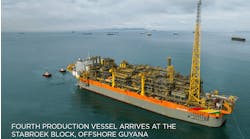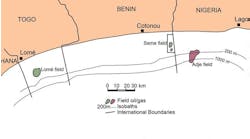Natural gas is in the early stages of significant growth into a worldwide commodity business. This is the conclusion presented at the Cambridge Energy Research Associates Executive Conference in Houston.
Driven by the need for cleaner power generation, the market for LNG is projected to expand from its current 6% of the market to 12% by 2030, according to Philip Dingle, president of ExxonMobil Gas and Power Co. ExxonMobil sees the world economy expanding at a 1.7% rate over that timeframe, which will expand hydrocarbon usage by 150%.
Half of the rising demand will be from the Asia-Pacific region, with oil and gas supplying 60% of the world's energy at that time. By 2030, Dingle says, natural gas will compose 25% of that 60% of supply. This anticipated expansion would require massive infrastructure investments. At least $100 billion/yr will be needed for LNG projects and $500 billion/yr for gas development.
Significant developments are underway in Qatar's North field, but Australia's Northwest Shelf, West Africa, South America, and the Arctic also will supply new LNG volumes. According to Ahmed Yousef A. Al-Khulaifi, commercial manager, Qatar Liquified Gas Co., the world LNG market will expand almost four-fold from 120 million tons per year in 2003 to 430 million tons per year by 2020.
To accommodate this growth, the LNG vessel fleet is in the middle of a building boom. In 2004, the LNG fleet stood at 132 vessels, up from 127 in 2000.
"The fleet will expand to 280 vessels by 2008," says Yasushi Yamawaki, managing director of the NYK Line. The vessels being built are also larger than their earlier counterparts.
2/16/05


